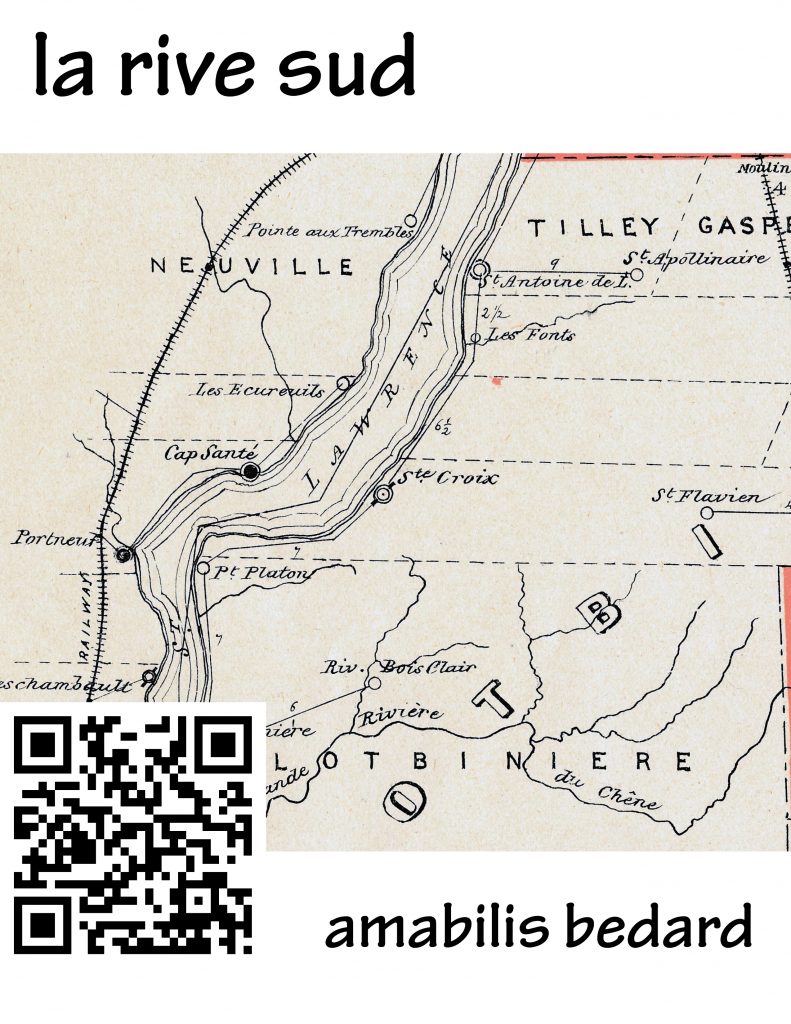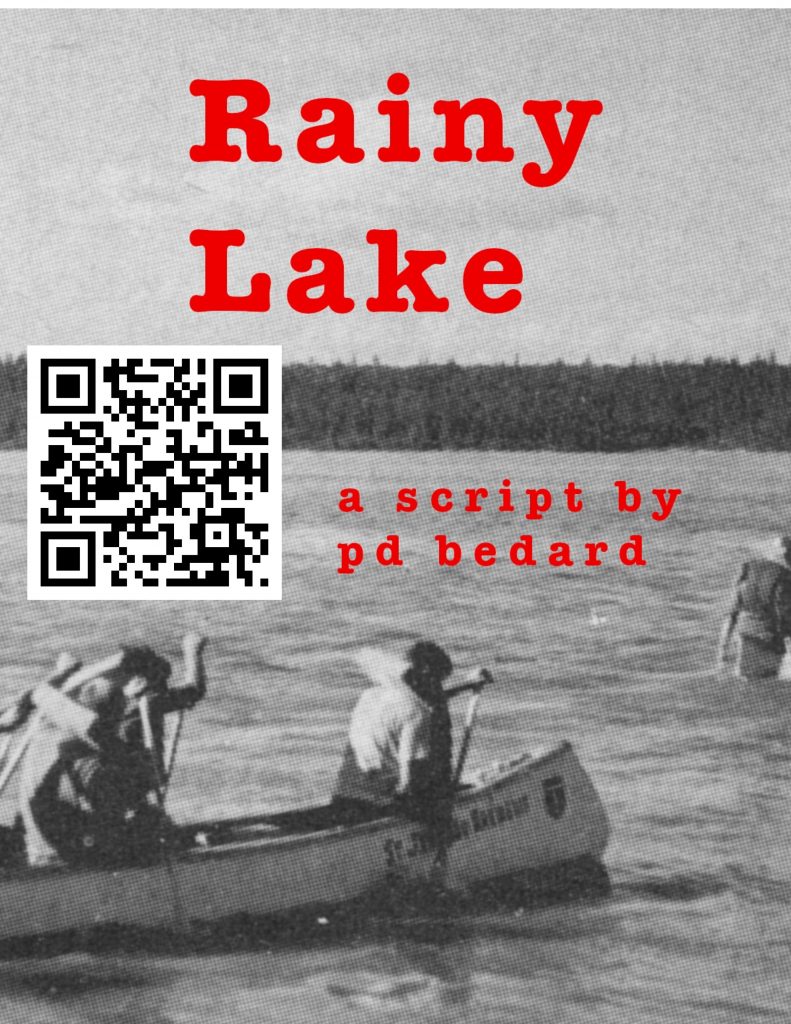
The conversation seemed to be getting sillier by the minute. No doubt it had a lot to do with the fact it was after midnight and we had just paddled 50 miles. But we weren’t just giddy from fatigue. I know I for one was worried about what might happen the next day.
Three weeks earlier 39 boys in grades 8 and 9 at St. John’s Cathedral Boys’ School had set off by canoe from Thunder Bay bound for Winnipeg by the famous Grand Portage fur-trade route. Now, with home almost in sight, there was a chance we would be denied our goal. Lake Winnipeg was not known to be kind to travelers.
We were camped on Traverse Bay not far from the site of old Fort Alexander, a North West Company pemmican post in the early 1800s. But there was only one thing on our minds that day in early July of 1965. Would the wind play havoc with the lake and force us to quit? A little bit of mindless banter between Mr. McCormack and myself seemed to be just the right antidote for such defeatist thoughts.
“What do you think we should do with all the leftover spaghetti?” I playfully put to Mr. McCormack, his face just visible in the dim light of the campfire.
“Feed it to the fish,” he replied in his husky American accent.
John McCormack was from Minneapolis. The previous September he’d dropped out of Yale to become a junior master at the school. More than six feet tall with slightly hunched shoulders, he bobbed his head emphatically when he spoke. I enjoyed his offbeat sense of humor and would egg him on whenever the moment seemed right.
“How do you know they eat it?”
“Because they’re Italian in this part of the lake. You can tell by the way they slap their tails on the water. It’s different from the usual plop plop.”
Already the conversation was going in a direction I knew I shouldn’t pursue, what with its racist overtones. But I couldn’t resist.
“What about the bucket of tea?” I continued.
“Same thing,” he replied. “In fact, maybe we should throw in a couple of extra bags just to make sure it’s strong enough. And if they’d like it a little hotter we could always set fire to the beach.” He was referring to the piles of driftwood that lined the shoreline.
“I think the Forest Service people might have something to say about that. It would be quite a blaze by the time we got the water boiling.”
“Then we’ll make it self-extinguishing,” he countered. “Light it when it’s calm, like right now, and when the wind comes up the waves will roll up on the beach and dowse it.”
The last time I’d been in a conversation like this with Mr. McCormack he’d been trying to persuade those of us listening that the cloud that had just soaked us was the same one that had come by twice before that day. It was traveling in circles, he maintained.
This time it was just he and I. I was supposed to be keeping watch alone but Mr. McCormack had been reluctant to go to bed because his turn was next. The plan was to sleep for two hours and then set off down the lake while it was still calm.
Four of the six steersmen on the trip had drawn straws to see who would get a half-hour watch. I was one of the unlucky ones along with Mr. McCormack. I was also one of three student steersmen on the trip. It was an appointment that prompted the school’s annual report that year to dub me the “youngest steersman” because I was only 14.
For a couple of minutes, he and I had sat in silence, watching the fire flicker and crack. My thoughts had again returned to the next day. I wondered if he too was thinking about what lay ahead.
“Any predictions on the wind,” I said more seriously.
“Yup. There will be wind,” he replied mimicking the authoritative manner of a TV meteorologist. “And that’s a promise.”
He obviously wasn’t interested in a gloom and doom discussion about being windbound on Lake Winnipeg, 50 miles from home. So I let the subject drop.
By the time my half-hour stint was over we’d moved from transforming Traverse Bay into a gigantic teapot to damming Lake Winnipeg at the narrows so we could make the Red River flow the direction we would be heading.
It was still dark when the call to wake up rang out. Our immediate objective was the point at the entrance to Traverse Bay, a distance of 12 miles. From there, our route followed a stretch of open water south down the East shore of the lake to the Red River.
It was along this same stretch of the lake that on June 20, 1817, a North West Company canoe from Montreal overtook Lord Selkirk on his first trip to Red River to hand him a royal proclamation ordering him to return all forts he had seized from the Nor’westers. Selkirk had taken the forts following the murder of 21 Selkirk settlers the previous summer by men working for the NW Company. The legal battles that followed ruined Selkirk’s health and ultimately cost him his life, but his colony survived.
Half asleep, we packed our gear, launched the eight-man canoes, and loaded them. Before setting off, Mr. Byfield, the expedition leader and one of the founders of the school, outlined the procedure for running at night and then asked God’s blessing on our travels that day. We would eat, he said, when there was time.
In single file, we crept along the south shore of Traverse Bay. Periodically, Mr. Byfield would conduct a roll-call. The names “Brebeuf,” “Marquette,” “Budd,” “Peguis,” and “West” rang through the stillness of the night as each steersman shouted the name of his canoe. My boat was the John West, named after the first Anglican missionary in Red River.
From time to time we would pass through pockets of the cool night air, jolting us like a splash of cold water. The lake remained calm but we could only wonder for how long. As the sun rose into a partly clouded sky our first objective was almost at hand. By six o’clock we had rounded Victoria Point and were pulling up on the beach for a cold breakfast. But, as we feared, the water on the open lake had already turned choppy.
We set off re-energized by a slice of Klik luncheon meat and an orange. The latter was a luxury leftover from supper at Pine Falls the previous evening provided by the mother of Dave Bartlett, one of my crew members. With each stroke, it seemed as if the lake turned increasingly more turbulent. The one consolation was the wind was coming from the northwest, providing us with a tailwind.
For the first time in our 700-mile journey, the route ahead was lined with pockets of civilization. So we began to think in short jumps. Two miles to Victoria Beach, another four around the bay to Hillside Beach, three more to Ironwood Point, then a long eight to Grand Beach, and so on. There was no shortage of places to get help, even abandon the trip if the lake should turn suddenly turn violent.
By hugging the shoreline the first two objectives were reached with relative ease. But once around Ironwood Point we came face to face with just how much open water we had to cross. Grand Beach point jutted far out into the lake so indistinctly you couldn’t really tell where it ended.
Our only company during that long crossing was a commercial fisherman and his son checking their nets. The gusty northwest wind had now turned the lake into a gigantic roller coaster. One moment the bowsman would rise high above the crew only to pitch down into the trough that followed. The force of the fall was often enough to throw the entire crew off its stroke. Every so often I’d hear someone give a cold shudder as another wave broke overboard.
Conversation was by now drowned out by the constant roar of the wind. We could only communicate by shouting. The strain of paddling hour after hour in rough water was beginning to take its toll. The early morning enthusiasm to beat Lake Winnipeg had long since disappeared.
One by one the canoes had fallen behind the lead boat steered by Mr. Byfield and the brigade was now spread out over more than a mile. It was well past mid-morning when someone in my boat yelled out that he thought he could make out the water tower at Grand Beach.
An hour later we had passed the summer resort and had caught up to the lead boat now stopped in the shelter of an island off Grand Marais. It was then that Mr. Byfield delivered the best news of the trip: the Red River was only 18 miles away. Spirits soared. That meant less than four hours paddling. Surely there could be no stopping us now. We lingered only long enough for some cheese and more oranges.
To our disappointment, once beyond the island the conditions had deteriorated considerably. There were now dark clouds on the horizon. Still, we pushed on, resuming our ride on the turbulent waters of Lake Winnipeg.
The last 18 miles of shoreline were broken only by a tiny bump at the end of Balsam Bay. It took what seemed like an eternity to reach it. The lead canoe had again stopped and was bouncing wildly on the water. From then on we would be traveling broadside to the waves and Mr. Byfield wanted to be sure we were running in close formation — especially now that the storm clouds were overhead.
The new tack brought new problems. Waves broke over the side on a regular basis. Continuous bailing was necessary. Members of the crew began to get seasick. Tempers flared each time someone went out of stroke or one paddler banged the hand of his seatmate. Periodically, one member of the crew would simply stop paddling, ready to quit, before realizing there was no way out.
We were heading for a channel so there was no way of telling where on the horizon our destination lay. We had left the wooded shoreline of the lake and were passing the scrubby landscape of Netley Marsh. The air was alive with every kind of waterfowl.
Finally, after nearly three hours, it appeared as though the lead canoe was headed towards shore. Had he decided to stop for a break or had he reached the channel, we wondered? The storm clouds were all around us but it wasn’t raining. There seemed no reason to stop.
Not long after, my bowsman yelled out that he could see a lighthouse. When the news was confirmed by the second paddler, the crew burst into raucous cheering. Without anything being said, man for man we dug in with renewed vigour.
For the last half hour, no one seemed to notice the water coming overboard or the constant roll of the canoe. And then, as if by magic, it was all over. Everything suddenly went very quiet. We had arrived in the calm of the East channel. We had challenged Lake Winnipeg and won.
By comparison, the four-hour paddle through Netley Marsh and up the river to the school near Selkirk was like a holiday cruise. That night we ate mountains of pancakes and slept in a real bed for the first time in 21 days.
The following day’s journey into Winnipeg was the icing on the cake. So many well-wishers lined the banks it felt like a 25-mile ticker-tape parade all the way to St. John’s Cathedral. Such famous historic sites as Lower Fort Garry and St. Andrew’s stone church went unnoticed in all the excitement. From time to time, someone would launch into an old voyageur tune and everyone would belt out the chorus, filling the river valley with song.
As we unloaded the canoes for the last time the magnitude of our accomplishment began to sink in. We had paddled 700 miles and crossed more than 40 portages in 21 days. One four-man crew had carried their canoe over the nine-mile Grand Portage in an unthinkable three hours and forty minutes. In the final push to reach Red River, we had paddled 160 miles in three days on only six hours of sleep.
Mr. Byfield’s parting words — ones he had used at the beginning of the trip — made a lasting impression even if most of us didn’t really understand what they meant. He repeated the words inscribed on the grave of British Prime Minister William Pitt: “The means by which Providence raises a nation to greatness are the virtues infused in great men.” St. John’s Boys’ School, he stressed, was as much about how you did things as what you did.
Richard de Candole has been working in British Columbia and Alberta as a reporter and editor for over 40 years. Toughest School in North America is about his five years as a student at St. John’s Cathedral Boys’ School in Selkirk, Manitoba from 1962 to 1968. Richard lives with his wife Wendy in Qualicum Beach, British Columbia.
Buy the book exclusively through Amazon.






1974 new boy trip oh the memories. We finished padding to the school down the red river to a spectacular sight of the northern lights bright green meandering above us. Have never seen them since so bright. Cold, wet, hard, windy, heavy canoes, blisters love to do it again it challenged me at age 14. as the bowsman.
Hey! I was with you on that trip, if it was the springtime Bloodvein River trip, and clearly remember the Northern lights on the Red. I was a teacher then, with Frank, Steve Weatherby, and Don Hardy. It was my favorite trip! I have several photos of the end of the trip.
I’m pretty sure you were on the meat room crew, and I have some photos of that as well, you may be in one or two of them, I’ll have to check.
Hope you are well,
Ted Jones
Manitoba staff, 1974-76.
jedstone10@gmail.com
Where can I order a copy of this book “Toughest School…”
Scott (and others asking),
The plan is to put something out on Amazon as soon as it’s ready. It should be available online on Amazon’s Kindle format and in print as a paperback. I’ll make sure I get an email out to all of you who send me mail when we get done. This book is historically significant in a multitude of ways, from the experiences of the boys who lived through it to how St. John’s shaped Canada, in its own way, for good or bad. Richard kept a log, which, in the ’60’s was the closest thing to video. Stay tuned.
I’d like to be on the list for the completed book. I’ll be needing several copies for family and friends who have graciously tolerated listening to my endless stories, trying to determine if they were true!
I’d also like to talk to you about any ideas you may have on how to get my 2-part magazine article published as a kind of coffee table book, with over 100 pretty good photos. “Following in McKenzie’s Wake”, Outdoor Canada Magazine, 1977, is about the alumni trip we did over the Rockies.
Hope you are well,
Ted Jones
Manitoba staff, 1974-76.
Pulled over for a “shore break” after a winter storm on trans Canada highway just outside of Canmore AB, i re-entered the warmth of my truck. Instinctively (albeit sadly) picked up my phone and found the link to this awesome story.
I attended the Alberta school from 77-81 and during that time had my share of St John’s adventures.
The white world all around me completely vanished as I could hear the shouting of voices, slapping of waves, and see the rhythmic rising of strong fists clenching very familiar paddles as I was transported from the trusty Ford through time and space.
No where again would school group adventurers experience our epic travels as society has sadly governed this type of education and tremendous growth.
I, like the majority of my St John’s brothers, grew in ways we couldn’t appreciate at the time, but were sometimes lucky enough to hear as the wise men who led us could occasionally summarize into blisteringly accurate sentences highlighting our achievements.
I went to St. John’s Ontario in the mid to late 70’s. My new boy was the English River I believe Ear Falls o Selkirk. We also did The Grand before my Grade 9 year. Funny Enough my 1st trip was spent in the John West. We had many teachers from Winnipeg you may remember Frank Felletti, Mike Maunder were our founders. Your story described both times down Lake Winnipeg. Wind bound both times down to juy mac and cheese and oatmeil our last trip.
From one journalist to another, wonderful story. What a wash of memories it brought up. Thanks so much for this. I’d love a copy of the book. SJCBS, 1968-72.
The chapters are being reworked and serialized over the next few weeks. The plan is then to publish it as a paperback or on kindle. Say tuned!
I attended sjcbs 87to89 #1325 -Brooks not long before it was shuttered. I’ve been digging up relics and memories inspired by this page and the snippets of content from those who went before me. I would love a copy of the book. My father was a friend of Ted Byfield and it would be a great read for him as well.
The chapters are being reworked and serialized over the next few weeks. The plan is then to publish it as a paperback or on kindle. Stay tuned.
I’d like to be on the list for the completed book. I’ll probably want several copies for my family and friends that have tolerated by endless stories over the years.
I have a copy of your book that you graciously sent to me years ago. We met in Hudson’s Hope BC when we were setting off on our alumni canoe trip over the Rockies to Prince George in the late seventies. I think I may have sent you a copy of my magazine article “Following in McKenzie’s Wake”, Outdoor Canada Magazine (2 parts).
I’d also like to talk to you about ideas that you might have on how to get my article published as a kind of coffee table book, with over 100 pretty good photos.
Hope you are well,
Ted Jones, Manitoba staff, 1974-76.
Ted, you were my grade 12 biology teacher and I went on that trip up the Parsnip River. I have a copy of your article on the shelf of my office right now and 3 boxes of slides that you took on the trip. Hope you are ok. I actually found a you tube video about a jet boat going up the Parsnip to Arctic Lake.
Hey, Bill ! Damn ! Great to hear from you! I’m pretty sure that we did the Churchill together in ’74 (?). It was my induction into the St John’s experience. I had no idea what I was getting into ha!
I kept in touch with Jim McKay for years, and he, Rob Keegan and I did a trip in the Adirondacks high peaks in upstate New York several years ago. I also keep in touch with Fred Parr, David Barrett and Pierre Bedard.
Let me know how life has been for ya. Do you keep in touch with Greg Taylor, or anyone else on that trip? I haven’t been in touch with Keith and Barbara for a real long time, I’ll have to take care of that.
Hope you are well,
A warm handshake,
Ted
Ted, sorry for the delay but yes I did go on the 74 Churchill trip. Sometimes when I am falling asleep instead of counting sheep i try to remember some of my experiences like that one. I remember we tipped in a rapids and were towed to shore and the water was about 2 degrees above ice. The other guys built a huge fire and after a while we were thawed out. best wishes
Wow, that remarkably summed up at least a couple of my own experiences paddling the lower east shore of Lake Winnipeg. So glad for the experience. ‘73 (Jackson lead New Boy and ‘76 Parr lead Grand Portage.)